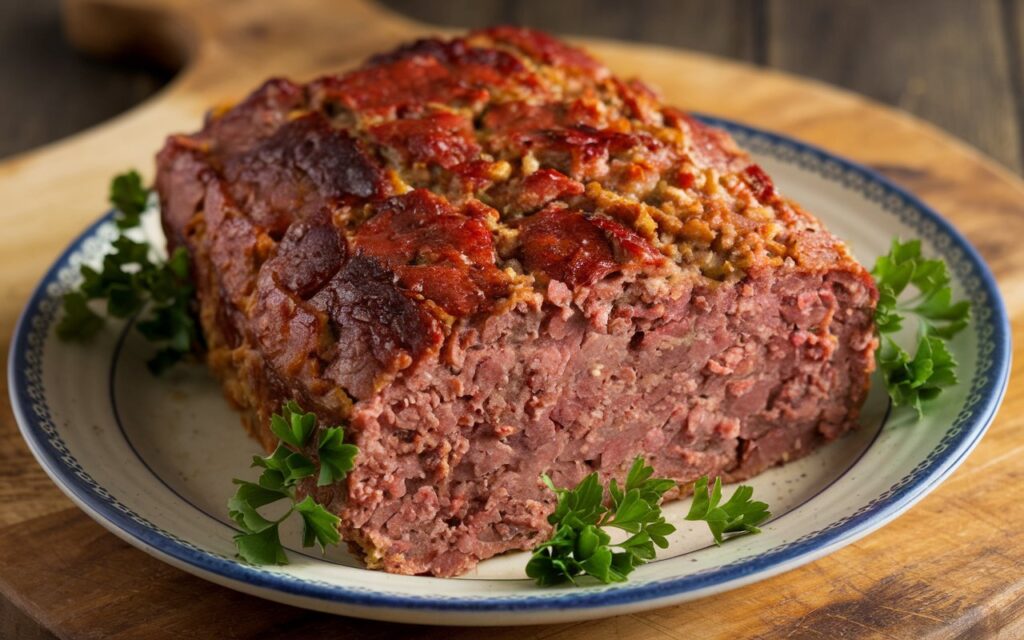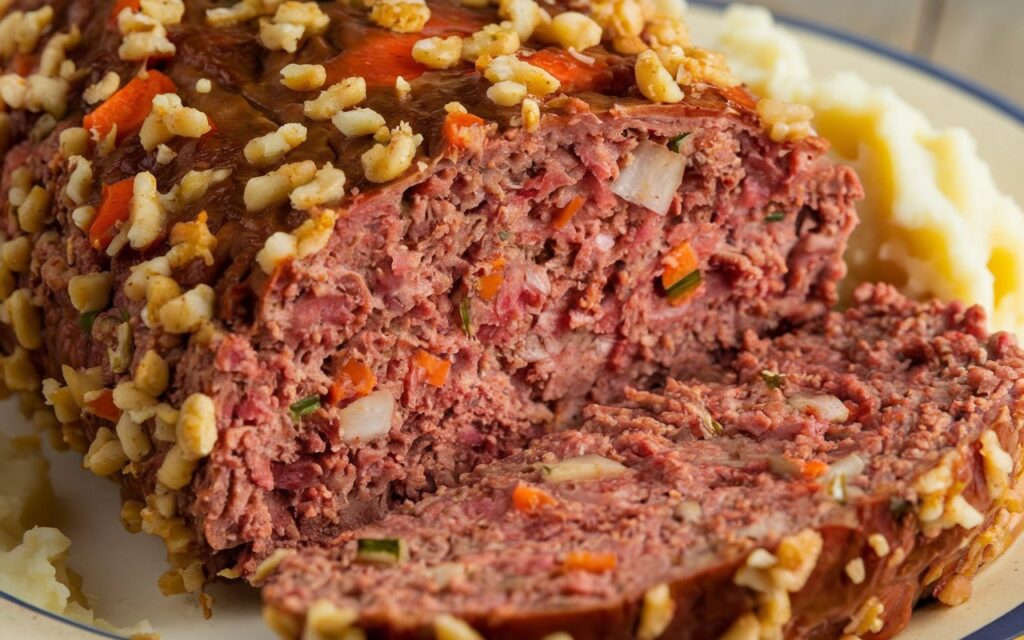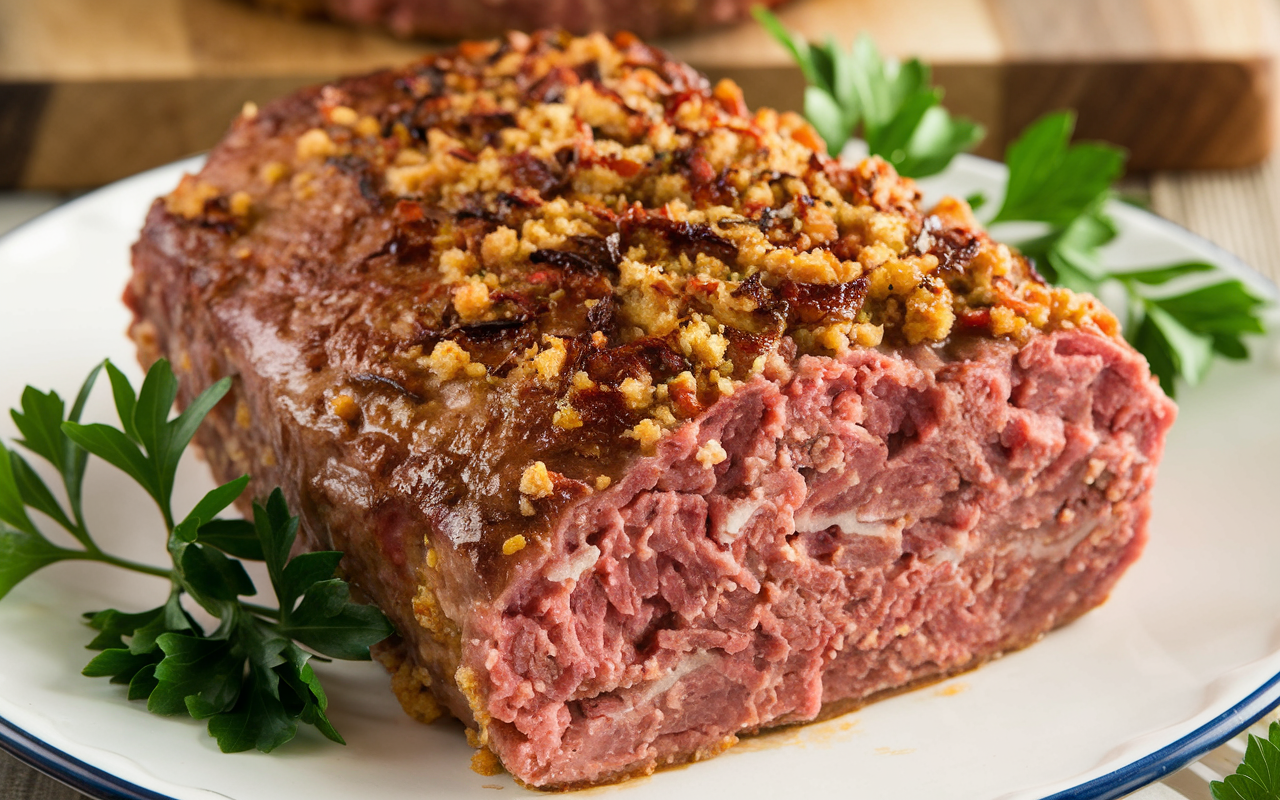Meatloaf is one of the quintessential comfort foods that graces many family dinner tables across the United States. It’s a dish loved for its simplicity, versatility, and comforting flavor. But have you ever wondered, what is the secret to juicy meatloaf? It’s a question that home cooks and professional chefs alike ponder, as everyone wants to make that perfect, moist, and flavorful meatloaf. This article delves into the key ingredients, techniques, and tips for ensuring your meatloaf stays juicy and tender, every time you prepare it.
The Secret to Juicy Meatloaf: Understanding the Basics
Before diving into specific techniques, it’s important to understand what makes meatloaf juicy in the first place. Many factors contribute to the perfect meatloaf, from the type of meat you use, to the seasoning and moisture-retaining elements that are added during preparation.
Choosing the Right Meat for Meatloaf
The choice of meat plays a crucial role in the juiciness of your meatloaf. Lean meats, while healthier, can lead to a drier loaf. For the best results, a blend of beef and pork is highly recommended. Beef brings flavor and depth, while pork adds moisture and tenderness. If you prefer a leaner option, turkey or chicken can be used, though these will require additional moisture-adding ingredients, such as grated vegetables or even broth.
Pro Tip: Using 80% lean beef and 20% fat is ideal for achieving a tender, juicy texture.
Adding Moisture to Meatloaf
Moisture is key to a juicy meatloaf. Some people rely on eggs, milk, or breadcrumbs to add moisture. But what really makes the difference is how you combine these ingredients. For example, soaked breadcrumbs (soaked in milk or broth) not only act as a binder but also retain moisture that keeps the meatloaf from becoming dry.
The Role of Milk in Meatloaf
Adding milk to meatloaf helps achieve a softer, more moist texture. It works with the breadcrumbs to lock in moisture. Instead of adding plain water, milk’s richness elevates the flavor and moisture retention in the meat.
Source on why milk is beneficial in meatloaf.
The Importance of Seasoning
Another key factor in ensuring a juicy meatloaf is proper seasoning. Lipton onion soup mix is a popular ingredient for enhancing flavor and juiciness. The seasoning mix contains dried onions and various spices, which infuse the meat with flavor as it cooks. It also helps maintain moisture, preventing the loaf from drying out.
Additionally, some recipes call for the addition of finely grated vegetables such as zucchini or carrots, which release moisture during cooking and contribute to the overall juiciness of the meatloaf.
Baking Techniques for a Juicy Meatloaf
How you bake your meatloaf can also impact its moisture level. Baking the meatloaf at a moderate temperature (around 350°F) is ideal. Cooking at too high of a temperature can lead to dry, tough meat, while too low of a temperature might not allow the loaf to fully set and could result in an undercooked center.
Another technique is baking in a loaf pan to help retain moisture. However, if you want a crisper exterior, baking it on a sheet pan with parchment paper will allow the sides of the loaf to brown evenly.
Should You Cover the Meatloaf While Cooking?
This is a question that many people ask: Is it better to cook meatloaf covered or uncovered? For a juicier meatloaf, it’s recommended to cook it uncovered for the first 40 minutes, allowing the meatloaf to brown and develop flavor. During the last 10 minutes of cooking, cover it loosely with aluminum foil to keep the moisture locked in and ensure the meatloaf doesn’t dry out.
Resting Your Meatloaf
After baking, always let your meatloaf rest for 10-15 minutes before slicing. This helps the juices redistribute throughout the loaf, ensuring that each slice stays moist and flavorful.
The Best Ingredients to Keep Your Meatloaf Moist
Here are some essential ingredients that can help keep your meatloaf moist and juicy:
- Eggs: Eggs act as a binder and help retain moisture.
- Milk: Adds richness and keeps the loaf tender.
- Breadcrumbs: Soaked in milk or broth, they absorb moisture and prevent drying out.
- Lipton Onion Soup Mix: Adds flavor and moisture retention.
- Grated vegetables: Zucchini or carrots can increase moisture content.
- Broth: A splash of broth (beef, chicken, or vegetable) adds additional moisture and flavor.

Common Mistakes That Lead to Dry Meatloaf
While meatloaf is a simple dish, there are a few common mistakes that can result in a dry, tough loaf. Here’s a rundown of what to avoid:
- Overmixing the Meat: Overworking the meat can lead to a dense, dry loaf. Mix the ingredients just until they are combined.
- Using Lean Meat Only: As mentioned earlier, lean meat alone can dry out the loaf. Be sure to balance it with fattier cuts of meat.
- Not Adding Enough Moisture: Don’t skimp on milk, eggs, or breadcrumbs. They help the meat retain moisture.
- Overcooking: Overcooking the meatloaf leads to dryness. Use a meat thermometer to ensure it’s cooked to an internal temperature of 160°F.
Source on meatloaf mistakes to avoid.
The Importance of Choosing the Right Meat for Juicy Meatloaf
When it comes to making a juicy meatloaf, one of the first steps is selecting the right meat. Ground beef is a classic choice, but mixing different types of meat, such as pork, veal, or turkey, can bring out a more complex flavor and add moisture. Lean cuts, while healthy, may result in a dry loaf because they lack fat, which is essential for creating tenderness. Therefore, it’s a good idea to use a combination of lean and fatty meats. For instance, an 80/20 ground beef mixture is often recommended for the best texture and flavor. Alternatively, incorporating ground pork can increase the overall juiciness of the meatloaf. Choosing the right mix of meats can significantly elevate the taste and consistency of your dish.
How to Keep Your Meatloaf Moist with the Right Bindings
The key to a tender and moist meatloaf lies not just in the meat, but also in the binding ingredients. Eggs, breadcrumbs, and milk serve as essential binders in your meatloaf mixture. The breadcrumbs absorb moisture from the milk, preventing the meatloaf from drying out during baking. It’s important to soak your breadcrumbs in milk for a few minutes before mixing them into the meat. Eggs act as a stabilizer, holding the meatloaf together while providing structure. The ratio of binders to meat is also crucial – using too many can result in a soggy loaf, while too few may lead to a dense and dry texture. Balancing these ingredients properly ensures that your meatloaf is both cohesive and moist.
Vegetables: An Unexpected Key to Juicy Meatloaf
Adding vegetables to your meatloaf may seem unusual, but it’s an essential trick for ensuring juiciness. Vegetables like zucchini, carrots, and onions not only introduce valuable moisture, but also improve the flavor profile. Zucchini, for instance, is packed with water that releases during cooking, keeping the loaf moist without overpowering the flavor. Grated carrots add both sweetness and moisture, creating a tender bite in every slice. These vegetables also contribute fiber and nutrients, making your meatloaf healthier. By incorporating finely chopped or grated veggies, you’ll enhance the texture and moisture, all while adding more depth to your dish.
Toppings and Glazes: Creating Moisture on the Outside
While the interior of your meatloaf is key to its moistness, don’t overlook the importance of toppings and glazes. A well-applied glaze creates a flavorful, caramelized crust on the outside, sealing in the juices. Common glazes include ketchup, BBQ sauce, or a mixture of brown sugar and ketchup. These ingredients create a tangy and sweet coating that enhances both flavor and moisture retention. When glazing, be sure to apply the topping halfway through cooking to prevent it from burning while the meatloaf cooks through. For an extra layer of moisture, you can even baste your meatloaf during cooking for a beautifully lacquered finish.
Slow Cooking for an Ultra-Tender Meatloaf
If you’re aiming for an exceptionally juicy meatloaf, consider using a slow cooker. Slow cooking allows the meatloaf to cook at a low temperature for an extended period, allowing the flavors to develop and the moisture to be retained. When using a slow cooker, the lid traps steam, which helps keep the meatloaf from drying out. This method is ideal for hands-off cooking and ensures the meatloaf stays tender without needing to be constantly monitored. If you don’t have a slow cooker, consider using the oven at a low temperature, around 325°F, and cooking for longer than the usual time to achieve similar results.
Let Your Meatloaf Rest Before Slicing
Once your meatloaf is out of the oven, the next step is one that many people overlook: allowing it to rest. Just like any roasted meat, letting your meatloaf rest for 10-15 minutes before slicing helps redistribute the juices throughout the loaf. Without this step, the juices will spill out when you cut into it, leaving your slices dry and flavorless. Resting allows the fat and moisture to be reabsorbed into the meat, ensuring that every bite is juicy and tender. Patience is key – this small step can make a big difference in your final result.
Mistakes to Avoid for the Juiciest Meatloaf
When preparing meatloaf, there are a few common mistakes that can lead to dryness. For example, overmixing the meat mixture can cause the proteins to bind too tightly, resulting in a tough texture. Additionally, cooking the meatloaf at too high a temperature can cause it to dry out before it has had time to cook evenly. Another mistake is neglecting to check the internal temperature of the meatloaf with a meat thermometer. The ideal internal temperature is 160°F to ensure the meat is fully cooked without overcooking, which can lead to a dry loaf. Being mindful of these factors can help you create a perfectly juicy meatloaf every time.

Frequently Asked Questions (FAQs)
What helps keep meatloaf moist?
To keep meatloaf moist, use a mix of lean and fatty meat, add soaked breadcrumbs, milk, and season well. These ingredients ensure that the meat retains moisture as it bakes.
Why do you put milk in meatloaf?
Milk adds moisture and richness to the meat mixture, helping the breadcrumbs hold onto liquid and keeping the loaf from becoming dry.
What does adding an extra egg to meatloaf do?
Adding an extra egg can help bind the ingredients more effectively, making the meatloaf firmer and less likely to crumble. It also adds moisture to the mixture.
Is it better to cook meatloaf covered or uncovered?
For a moist meatloaf, it’s best to bake it uncovered initially to allow browning. In the final 10 minutes, cover it loosely with foil to lock in moisture.
Conclusion: The Secret to a Perfectly Juicy Meatloaf
The secret to juicy meatloaf lies in a combination of the right meat, proper seasoning, and moisture-rich ingredients. By using a blend of beef and pork, soaking breadcrumbs, and adding key ingredients like milk, Lipton onion soup mix, and grated vegetables, you can ensure that your meatloaf turns out tender and flavorful. Don’t forget to bake at a moderate temperature and allow it to rest after cooking. Following these tips will guarantee a delicious, juicy meatloaf every time!

